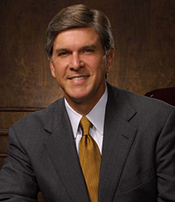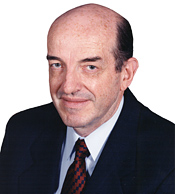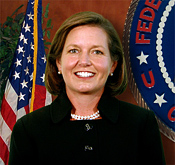Broadcast in 2010: Two Sides of the Coin
LAS VEGAS
For the 85,000-plus professionals who fly into Las Vegas in April for the 2010 NAB Show, they descend into a convention whose future looks both bright and a bit unsettled.
The annual convention in Las Vegas (April 10-15), still has the cachet of being one of the largest international trade shows in the world. But as the professional video industry has morphed and evolved, the convention has had to change around it: Even as it continues to be walloped by a sputtering economy—which cut the show’s 100,000-plus attendees down to a slim 85,000 last year—NAB continues to fight off questions about the very nature of the broadcast business model itself.
That’s not to say that the convention isn’t a force to be reckoned with. NAB insiders like to remind the industry that key business deals are inked at NAB, to the tune of $30 billion in sales last year.
But the convention does have its work cut out for it if the show is to define a smooth, clear path for an industry looking for answers on everything from HD and 3D to the next big thing on the horizon: Mobile DTV.

Gordon SmithNEW LEADERSHIP TAKES ON SPECTRUM FIGHT
This convention will also be the first for new NAB President and CEO Gordon Smith, who is expected to take a clear stance on several hot-button policy issues, particularly the heated discussion about potential redistribution of the broadcast spectrum. This week, the FCC unveiled its long-awaited National Broadband Plan, which calls for making 500 MHz of spectrum available in 10 years, and 300 MHz available within the next five years, for both licensed and unlicensed use. Of that, 120 MHz is to come from television broadcasters, who now occupy roughly 300 MHz. This so-called “Mobile Future Auction” is designed to accelerate the deployment of mobile broadband, according to FCC Chairman Julius Genachowski, who said such a plan could help struggling stations cut costs and make better use of their spectrum.

Michael Copps That plan, however, does not sit well with NAB, or with some individual broadcasters. As such, the sparks may fly during the NAB regulatory discussion “Washington Faceoff,” which will be chaired by FCC commissioners Meredith Attwell Baker, Michael J. Copps and Mignon Clyburn.
“As a one-to-many transmission medium, broadcasters are ready to make the case that we are far and away the most efficient users of spectrum in today’s communications marketplace,” said Dennis Wharton, NAB executive vice president of media relations. “[We hope to] expand the roll-out of broadband without threatening the future of free and local television.”
“We think we can complement broadband,” Wharton said. “Broadcast is extremely complementary; it’s not an either/or proposition.”

Mignon Clyburn Policy discussions will also take place during sessions like “Regulatory: Use it or Lose it” and “Regulations: You Want Me to Do What?”
Smith will also remind attendees that this is not your father’s broadcast business, perhaps signaling that the rules governing broadcast evolution are up for rewriting. The industry seems to be following in kind. Local broadcast stations are taking advantage of technologies like Twitter and Facebook in ever-larger numbers in an effort to boost viewership and solidify channel branding. The convention will respond with similar discussions at the show, such as the self-explanatory session “How to Use Twitter to Increase Your Station’s Ratings and Revenues.”
“I don’t know any broadcasters who aren’t embracing this technology now,” Wharton said.
THE NEXT BIG THING
With the excitement of the DTV transition behind it, the industry is looking at the horizon. And despite disagreements over spectrum issues, the next big thing for broadcasting is undoubtedly Mobile DTV.

Meredith Atwell Baker Led by the Open Mobile Video Coalition (OMVC), the momentum for television viewed on mobile devices is in full swing. A study conducted in November 2009 by Magid Media Labs found that much of the interest in Mobile DTV adoption is being driven by the desire for live, local programming as well as sports and entertainment content.
The financial picture looks promising as well. According to the survey, 36 percent of the study’s respondents said they’d pay for premium content, with 47 percent saying that they’d specifically purchase a new device to watch mobile programming.
Experts say the technology has the potential to generate $70 billion over the next 15 years, giving viewers an experience akin to HDTV. It’s now up to broadcasters to decide how to take advantage of that potential, experts say.
“The mobile landscape is exploding, yet we don’t see a clear leader in that space,” said Jamie Spencer, director of Magid Media Labs. “This is especially true for the local picture. We believe that broadcasters have the opportunity to own this platform locally, but they need to be aggressive and have content that will drive use.”
For broadcasters, there’s another silver lining. A majority of study recipients have said that the programming they’d tune to first would be hyper-local, detailed, breaking news. Eighty-eight percent of respondents said they would watch news programming on a mobile device, with breaking news and weather topping out as key contenders. Compare that with the mere 26 percent of viewers in the Millennial age range (18-29 years old) that watch local news programming on a traditional television set.
Long heralded as broadcasting’s golden ticket, local news has another medium to conquer.
“Millennials actually have a strong connection with local TV news brands,” Spencer said. “They believe these stations have information they need, although local TV is just not delivering it in a way that is compelling for them.
“Making local news and information content available on Millennials’ terms greatly increases the appeal of this content,” Spencer added.
Beginning in April, the OMVC was in the midst of an ongoing test of Mobile DTV in the Washington, D.C. metropolitan area, with eight local stations transmitting 20 channels of broadcast TV programming to hundreds of mobile devices. The goal is to measure and analyze consumer mobile digital viewership patterns to better understand what motivates users to use Mobile DTV, and gauge interest in premium and interactive services.
The convention will respond to this burgeoning market with sessions that address everything from the basics of Mobile TV to issues surrounding revenue streams. As part of the Broadcast Engineering Conference, a day-long “Mobile Television” session will touch on video quality and bit-rate issues in the new ATSC Mobile DTV standard, discuss audio processing requirements for mobile applications and look at the shortcomings inherent in Mobile DTV reception. Mobile will also be the focus in sessions like “Mobile: The 7th Medium” and “Mobile DTV: Revving the Engines and Ready to Go.”
Mobile DTV will be out in force on the exhibit floor as well. Technologies on display will likely include transmission and test equipment, prototype cell phones with Mobile DTV capability and battery-operated portable mobile TV sets.
On the show floor, attendees will also see a strong emergence of 3D technologies. The Digital Cinema Summit will touch on the dramatic rise in stereoscopic 3D films, and discuss the entire 3D path from acquisition through post and distribution. Attendees can also expect to see a wealth of 3D technology on the show floor, with companies like Sony, Panasonic, Orad, Quantel and Omneon displaying technologies that support 3D television. “This technology will energize the industry in much the same way as HD has done over the last few years,” said Geoff Stedman, senior vice president of marketing and business development for Omneon. The NAB expects to see 1,500 exhibitors on 800,000 square feet of exhibit space.
The show will also give engineering stalwarts information from its core disciplines as part of the Broadcast Engineering Conference, with sessions such as “DTV Transmission and Reception Issues” and “IEEE-BTS Tutorial: Audio Technology for Television.”
NEW DIRECTIONS

More than ever before, the convention will continue to branch out in new directions. Making a play on its broadcast roots, the NAB is redefining its convention as “broader-casting,” taking time to court the film and video game markets to a greater extent. In addition to a Broader-casting Conference, which will touch on the entire content ecosystem, the convention will introduce the 48-Hour Film Project to advance filmmaking. A new exhibit area known as Destination Broadband will be home to broadband-enabled TV, online video and gaming. And for the first time, the show will play host to the first annual Telly Awards Hall of Fame that will honor the best commercials and productions created for the Web.
Other key highlights are expected to be the delivery of the NAB Distinguished Service Award to actor Michael J. Fox; a keynote address by Discovery Executive Vice President John Honeycutt as part of the Digital Cinema Summit; the awarding of the NAB Chairman’s Award to actor Jim Parsons during the TV Luncheon; and a keynote address by Harris CEO Howard Lance during the Military and Government Conference, which will touch on the ways that commercial broadcast technology is increasing military equipment performance.
Doomsayers have long been knocking on broadcast’s door—ever more fervently lately—to say that it’s time to rethink the entire broadcast business model. Attendees will no doubt be part of ongoing discussions about the demise of that ad-supported business model, and the rise of the cable pay model.
But “broadcasting is the most efficient distribution of information out there,” Wharton said. “We have a rich history of being a one to many service, and are the platform to deliver video.”
The 2010 NAB Show hopes to offer up proof that the industry is not only viable, but thriving in the midst of enormous upheaval. To register for the NAB Show, visit www.nabshow.com.
The professional video industry's #1 source for news, trends and product and tech information. Sign up below.
Susan Ashworth is the former editor of TV Technology. In addition to her work covering the broadcast television industry, she has served as editor of two housing finance magazines and written about topics as varied as education, radio, chess, music and sports. Outside of her life as a writer, she recently served as president of a local nonprofit organization supporting girls in baseball.

